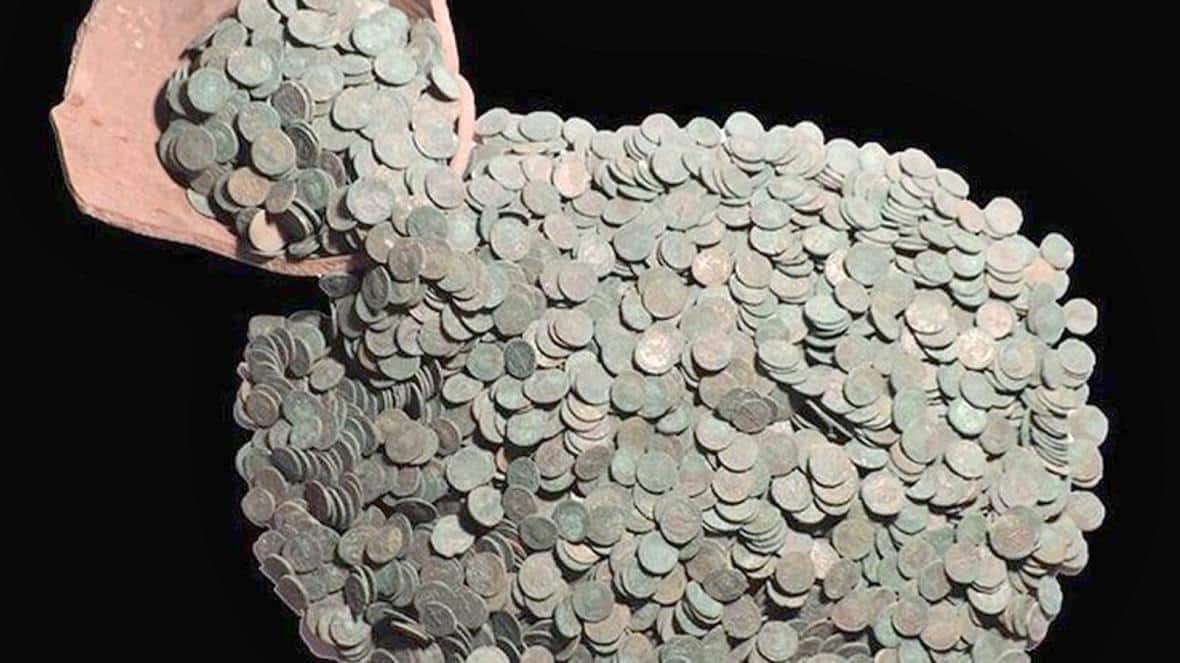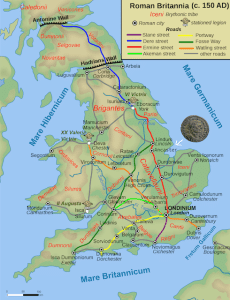The Rauceby Hoard was discovered by a detectorist near Ancaster (Lincolnshire) in July 2017, close to Ermine Street, originally a Roman road leading from Londinium (London) to Lindum Colonia (Lincoln) and Eboracum (York). Until today it is the largest Roman coin hoard ever found in the UK.
The Rauceby Hoard is a treasure not only for its monetary value but also for its historical and archaeological significance. The hoard reveals how Roman Britain was connected to the wider empire through trade, communication and administration. The hoard also demonstrates how coinage was used as a medium of propaganda and ideology by the emperors to assert their authority and legitimacy.
The hoard also illustrates how coinage was affected by inflation and debasement due to economic crises and military expenses. The Rauceby Hoard is a valuable source of information for scholars and enthusiasts alike who want to learn more about the fascinating period of Roman Britain.
The coins were found in a ceramic pot, which was buried in the centre of a large oval pit – lined with quarried limestone. What was found during the excavation suggests that the hoard was not put in the ground in secret, but rather was perhaps a ceremonial or votive offering. The Rauceby hoard is giving us further evidence for so-called ‘ritual’ hoarding in Roman Britain.
The hoard was reported under the UK’s Portable Antiquities Scheme (PAS) and sent to the British Museum. In 2019 the hoard was declared as Treasure Trove and only then reported by the press when it was declared as the largest hoard of it’s type to have been found in the UK.
The hoard consisted of 3,099 tetrarchic nummi dating from 294 to 307 AD, many in near mint-state condition.
The coins in the hoard bear the portraits and names of Diocletian, Maximian, Constantius I and Galerius, as well as their wives and sons.
Our collection displays Follis from Maximianus Herculius, Galerius and from Constantius I Chlorus (the Father of Constantine I the Great) from the famous Rauceby Hoard.
The latest dated coins in the hoard were of Constantine as caesar dating to 307 AD.
The youngest coin in the hoard was a reduced follis of Maximian, perhaps minted under Constantine I, but no coins of the latter as Augustus were found.
This means the hoard was likely buried circa 307, amidst the events of Constantine I’s acclamation as Caesar in Eboracum in 306 and his subsequent elevation to the rank of Augustus in December 307.
The majority of the coins were from Gaul (875 London, 1459 Trier, 468 Lyons), Italy (226), Carthage (24) and a small number from eastern mints. The coins were in remarkable condition, loose rather than fused together, and with only minimal surface deposits.
Since the hoard was declared Treasure Trove the British Museum got first pick, and chose to keep 375 coins, which the finders were paid for. The remaining coins were finally returned to the two finders earlier this year, to be split between them (700 each) and the landowner (1400).





